AUGUSTA — The 2019 fatal shooting of 41-year-old Jean Fournier of Turner in the Auburn Walmart parking lot was murder or self-defense, according to competing theories of the case.
On the first day of Gage Dalphonse’s trial Wednesday, attorneys on both sides previewed the evidence they plan to present in the Capital Judicial Center.
During her opening statements, Assistant District Attorney Katherine Bozeman told a jury of nine women and five men, including two alternates, that the “evidence comes together to tell you that the defendant held his firearm outside of his car window shot Jean Fournier in the back as he retreated and ran for his life.”
She said Fournier was shot twice in the back by Dalphonse, 23, of Auburn, who had a loaded handgun in a holster clipped to the front of his waistband.
Lead residue found on Dalphonse’s car suggests the muzzle of his gun was in the area of the metal support post dividing the front and back doors of his Volkswagen Golf hatchback and the front of the back passenger window, Bozeman told the jury.
Independent eyewitness accounts from the scene all agree “that Jean was retreating, heading away from the defendant’s vehicle, heading to the back of the car and beyond it at the time that he was shot in the back,” Bozeman said.
“All of the evidence that you will hear will tell you one thing: that the defendant murdered Jean Fournier,” she said.
The inciting incident was a chance encounter in the store parking lot on the evening of July 27, 2019. That’s when Dalphonse was driving with a friend, the windows of his car down, and he saw Fournier’s girlfriend, Tara Nguyen.
The two had worked together at an area nursing home and had a dispute at that time.
They exchanged insults in the parking lot as Dalphonse drove along.
Fournier followed Dalphonse’s car, which pulled into a parking space.
Fournier approached the car, Bozeman said.
Dalphonse “waits for Jean,” Bozeman said, “who’s walking towards his car, ready for whatever confrontation might be coming. Because you see, what Jean didn’t know, but what the defendant had with him making him brave was the semi-automatic 9 mm Glock handgun that he had just spent the afternoon target practicing with at a shooting range in Poland.
It was a “handgun, that he knew was loaded, because he reloaded it after the range before making his way to Walmart that day,” she said.
And it was the same handgun, she said, “that made any potential confrontation with the unquestionably larger Jean something to welcome rather than avoid.”
Fournier asked Dalphonse to apologize to his girlfriend.
Dalphonse refused.
Then Fournier hit Dalphonse, “not enough to knock him unconscious, not enough to make him gush blood or break any bones, but enough to leave a cut and some minor swelling on the inside of his lip,” Bozeman said.
But it was “enough to embarrass him in front of his best friend who was riding in the passenger seat with him, “ Bozeman said.
“So what does the defendant do next? He reaches for his gun, his loaded gun that he spent the afternoon shooting, his gun that makes him the bigger man to this person who just made him feel small,” she said.
One of the bullets fired into Fournier’s back hit his spinal cord, paralyzing him, according to medical experts, Bozeman said.
“This is important,” she said, “because this tells you that once that bullet entered the body, he wouldn’t have been able to make any purposeful movement.”
Video footage from the store’s surveillance cameras played for the jury shows Fournier running away from the driver’s window past the back of the car when his body drops to the pavement.
“He took step after step after step after step until he couldn’t take another step again, until his body landed on the ground of that parking lot motionless, beyond the defendant’s car entirely,” Bozeman said.
The three elements in Maine law needed to convict Dalphonse of murder are: Jean Fournier is dead; whoever caused his death did so intentionally or knowingly; and Dalphonse caused Fournier’s death, Bozeman told the jury.

Defense attorney James Howaniec makes a finger gun gesture Wednesday during his opening statement in the murder trial of Gage Dalphonse of Auburn at the Capital Judicial Center in Augusta. Listening from the bench is Superior Court Justice William Stokes. Joe Phelan/Kennebec Journal
Defense attorney James Howaniec told the jury that Bozeman omitted some important facts from her presentation.
“This case isn’t quite as simple of a narrative as the state police might have you believe,” Howaniec said.
He took the jury through Dalphonse’s movements leading up to the incident.
The reason Dalphonse was driving through the Walmart parking lot on that day was to drop off his best friend who had left his car at Walmart earlier.
Dalphonse, who had never met Fournier, had no idea he might encounter the boyfriend of the woman with whom he’d had a spat four months earlier at work, Howaniec said.
“Now, if he’s at Top Gun (shooting range) and he’s saying, ‘Hey, I hear this guy Jean Fournier, never met him before. I hear he may be there later this afternoon, let’s go over there and cause some trouble.’”
“That’s murder,” Howaniec told the jury.
“This isn’t murder. This is a tragic sequence of events,” he said.
When Dalphonse did happen to see Nguyen by chance, he kept on driving, not seeking a confrontation, Howaniec said.
But Fournier stalked Dalphonse through the lot, crossing to a parallel lane befor
e approaching his car.
Fournier, who outweighed Dalphonse nearly three times, was a menacing and intimidating presence, Howaniec said.
He said the prosecutors’ theory of how events played out isn’t supported by the evidence.
“Ultimately, we’re going to submit to you that it’s impossible that what they’re saying happened, happened,” Howaniec told the jury. “Because if you add space with time, their theory of where the shots rang out are not going to be possible.”
Howaniec suggested that Dalphonse reacted directly to the threat of Fournier in the moment.
His theory, he said, is supported by evidence not mentioned by the prosecutors, including the fact that one of the shell casings from Dalphonse’s shots was found by investigators inside the car despite the fact that that gun ejects spent shells to the back and to the right, Howaniec said.
The trajectory of one of the bullets shows it was fired upward on an angle unsupported by the state’s theory, Howaniec said.
He smacked his fist into his open palm several times to emphasize the force of the impact of the blow delivered by Fournier.
Howaniec showed autopsy photos of marks on Fournier’s knuckles and the cuts on the inside of Dalphonse’s lip.
He said Dalphonse was knocked “semi-conscious” by Fournier’s blow to the head.
“How would you like to be sitting in that car when these two angry guys come up to you and are pissed off?” Howaniec said, “because you just called their girlfriend a whore? That’s what happened. If that happened to you, would you be in a position to make important life decisions in your life?”
“The state says ‘murder,’” Howaniec said. “We say, ‘self-defense.'”
Copy the Story LinkSend questions/comments to the editors.


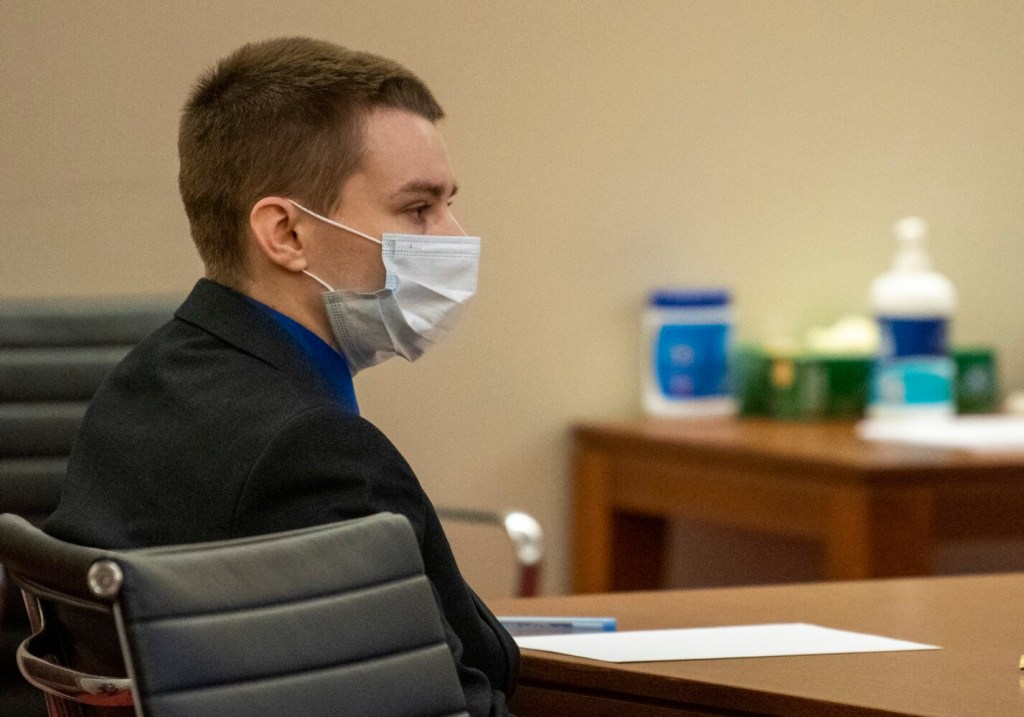
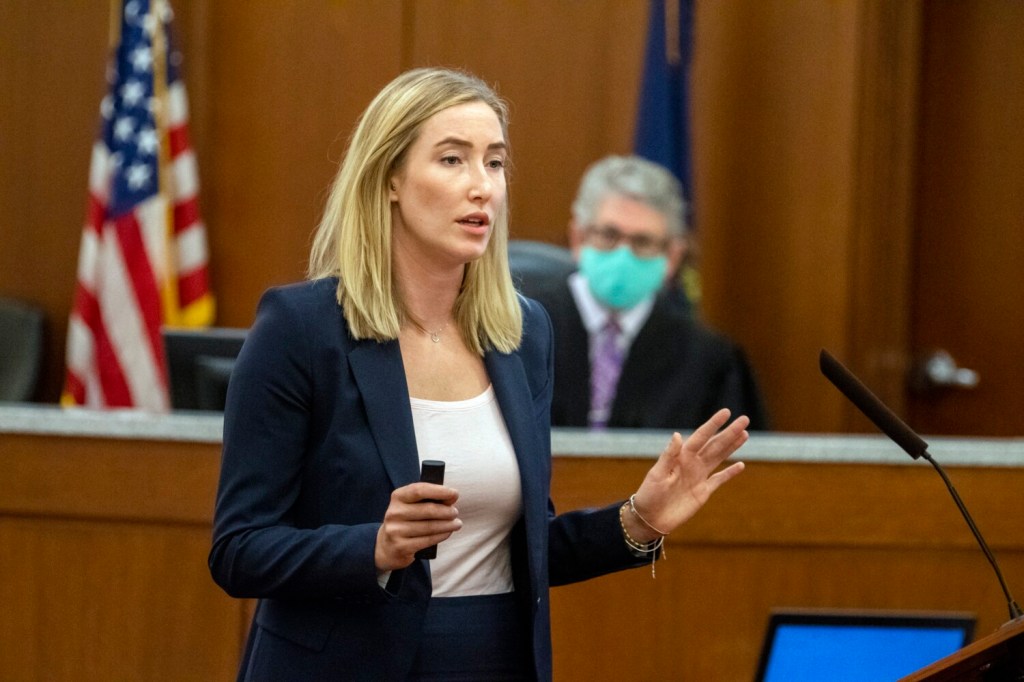
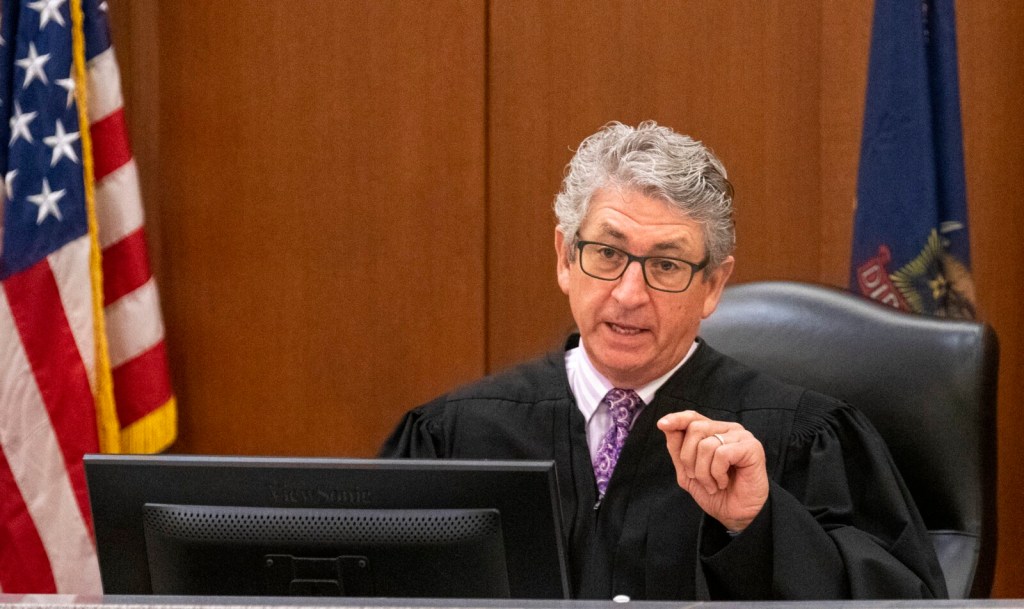
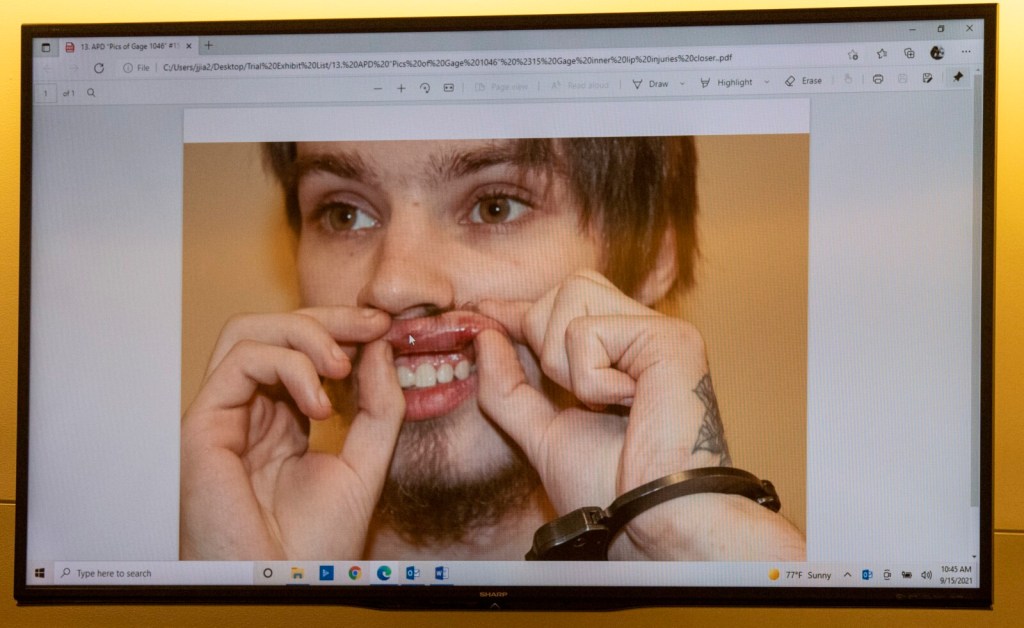

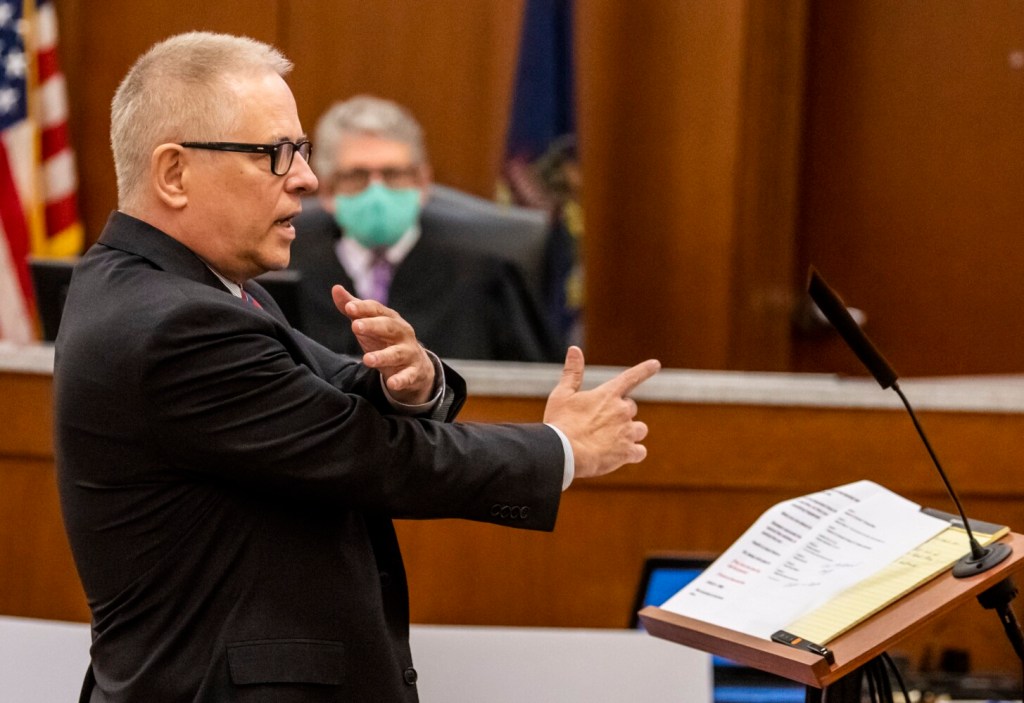
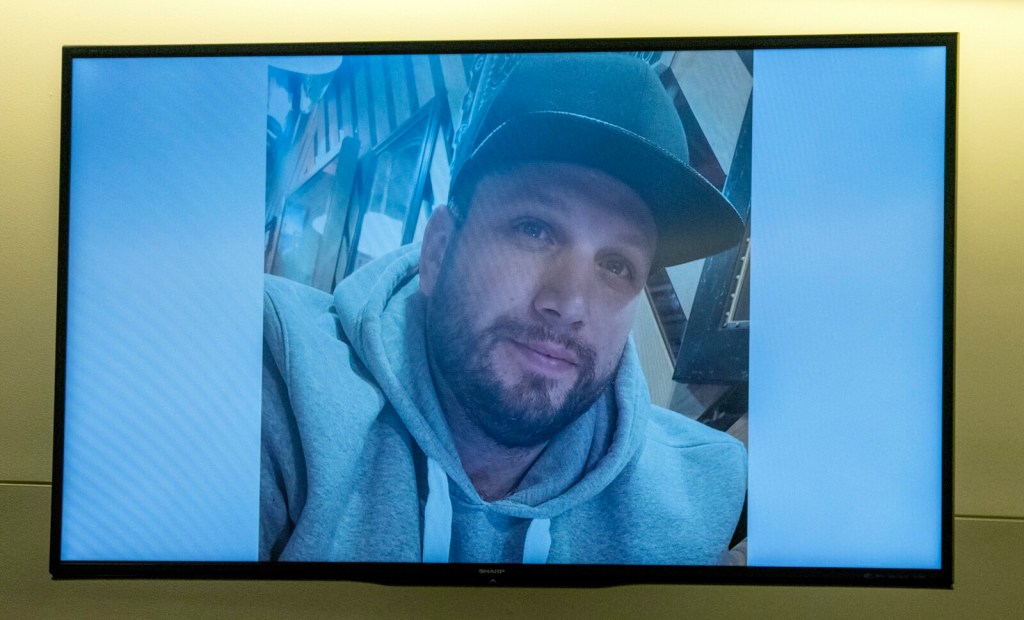
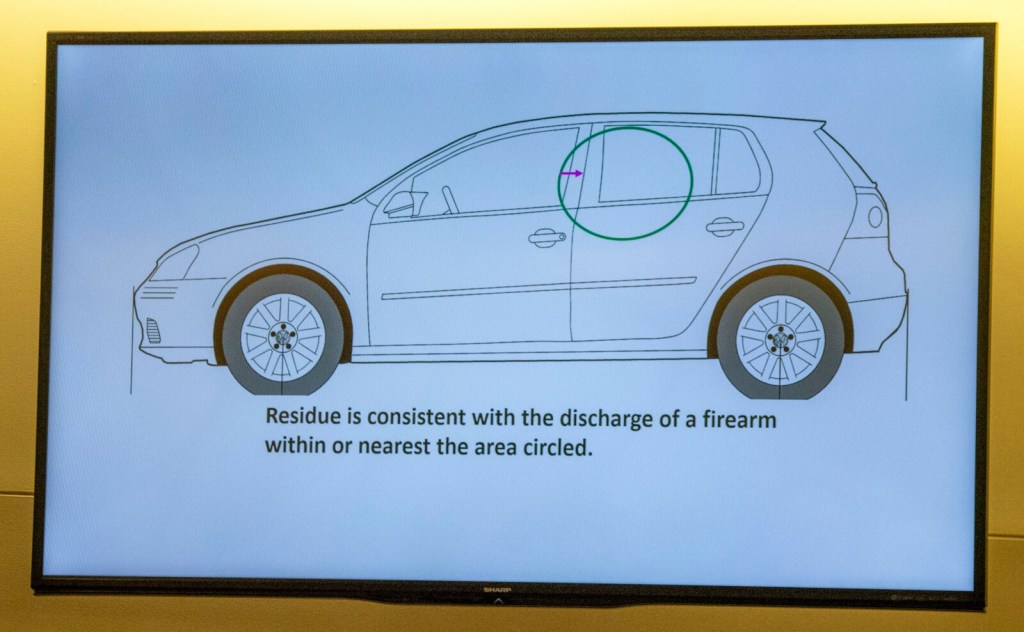


Success. Please wait for the page to reload. If the page does not reload within 5 seconds, please refresh the page.
Enter your email and password to access comments.
Hi, to comment on stories you must . This profile is in addition to your subscription and website login.
Already have a commenting profile? .
Invalid username/password.
Please check your email to confirm and complete your registration.
Only subscribers are eligible to post comments. Please subscribe or login first for digital access. Here’s why.
Use the form below to reset your password. When you've submitted your account email, we will send an email with a reset code.